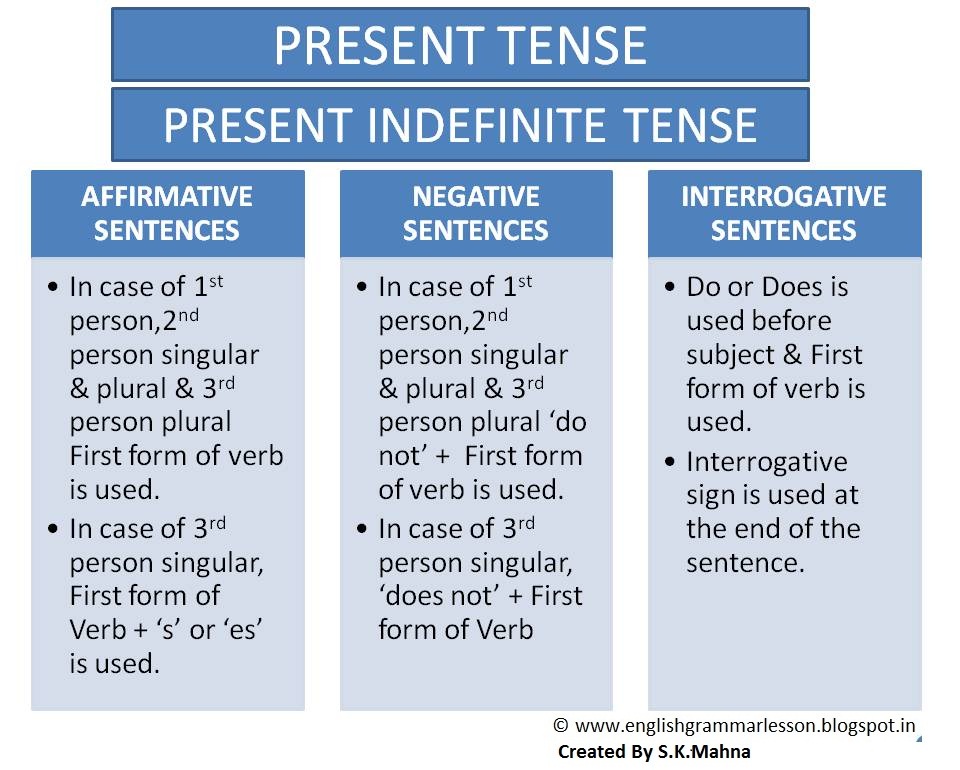
English Learning Made Easy & Simple PRESENT INDEFINITE TENSE
Write with Grammarly How to form the simple present In the simple present, most regular verbs use the root form, except in the third-person singular (which ends in s ). First-person singular: I write. Second-person singular: You write. Third-person singular: He/she/it writes. (Note the s.) First-person plural: We write.
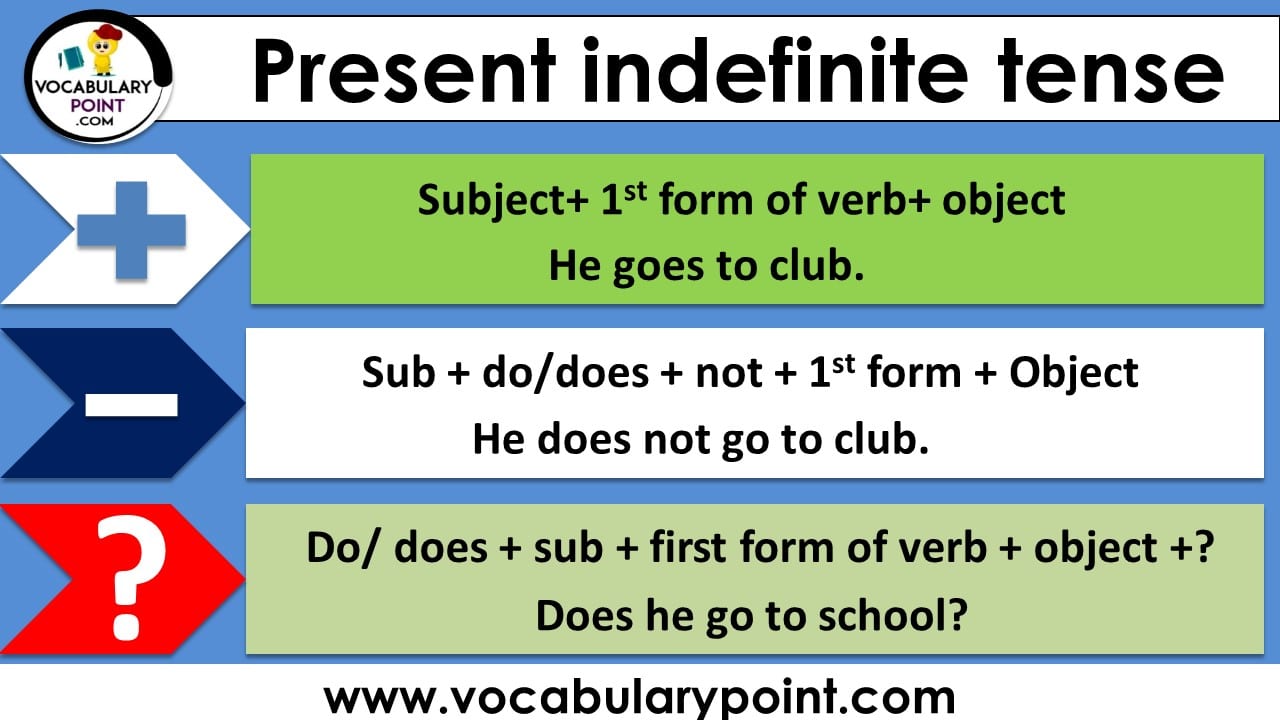
Present Indefinite Tense Examples, sentences & formation Vocabulary
Here are lots of Present Indefinite Tense example sentences to practice and learn Present Indefinite Tense. I am sure that you will love them. Examples of Present Indefinite Tense Positive /Affirmative Sentences: Present Indefinite Tense • I am a good student. • She goes to school. • He is the best student in the class. • Tajmahal blows my mind.
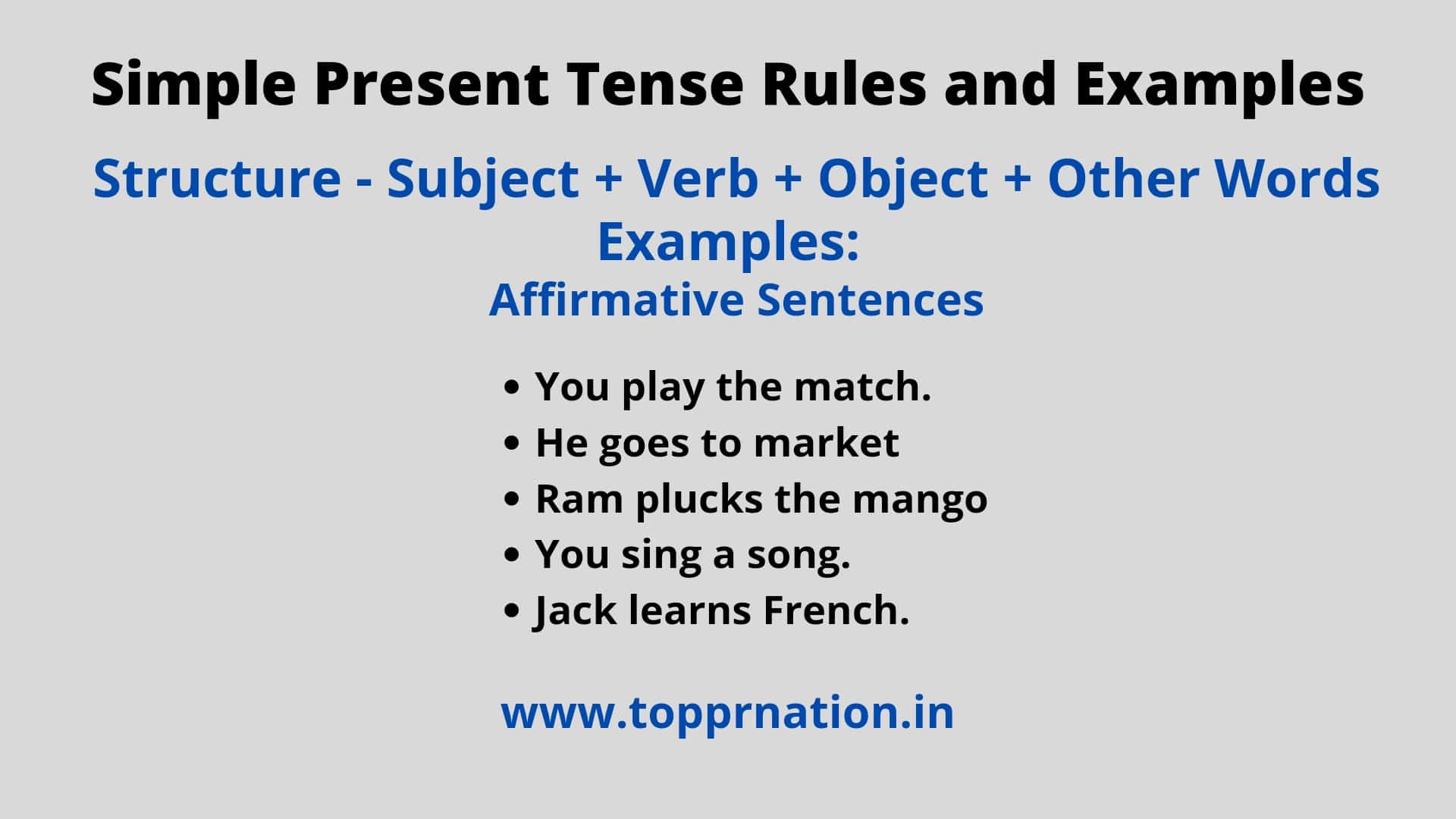
Simple Present Tense (Present Indefinite Tense) Rules and Examples
To form the present indefinite tense, you simply need to add '-s' or '-es' to the base form of the verb. For example, 'I walk to work every day would be written as 'I am walking to work every day. Here are 20 examples of present indefinite tense sentences: 20 Examples of Present Indefinite Tense. 1- We play soccer every Saturday.
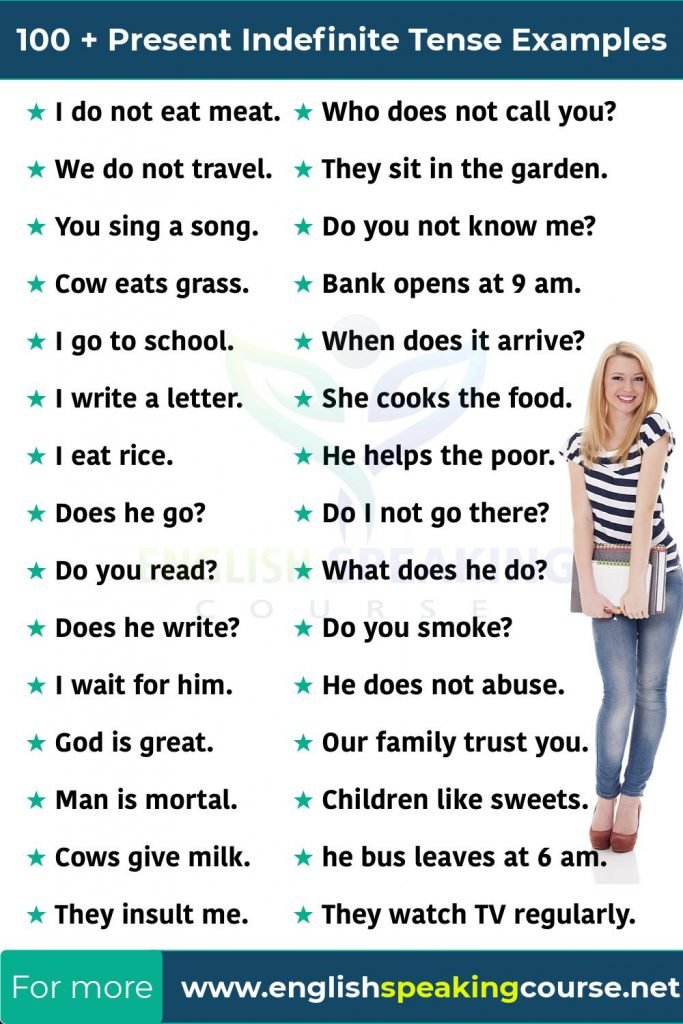
Present Indefinite Tense + 100 Examples + All Rules Tense
In the Present Indefinite Tense, we talk about actions that are habitual, general truths, or routine occurrences. Using clear examples helps learners understand this tense better. For instance, when you say "I eat breakfast every morning," you're talking about a regular habit.
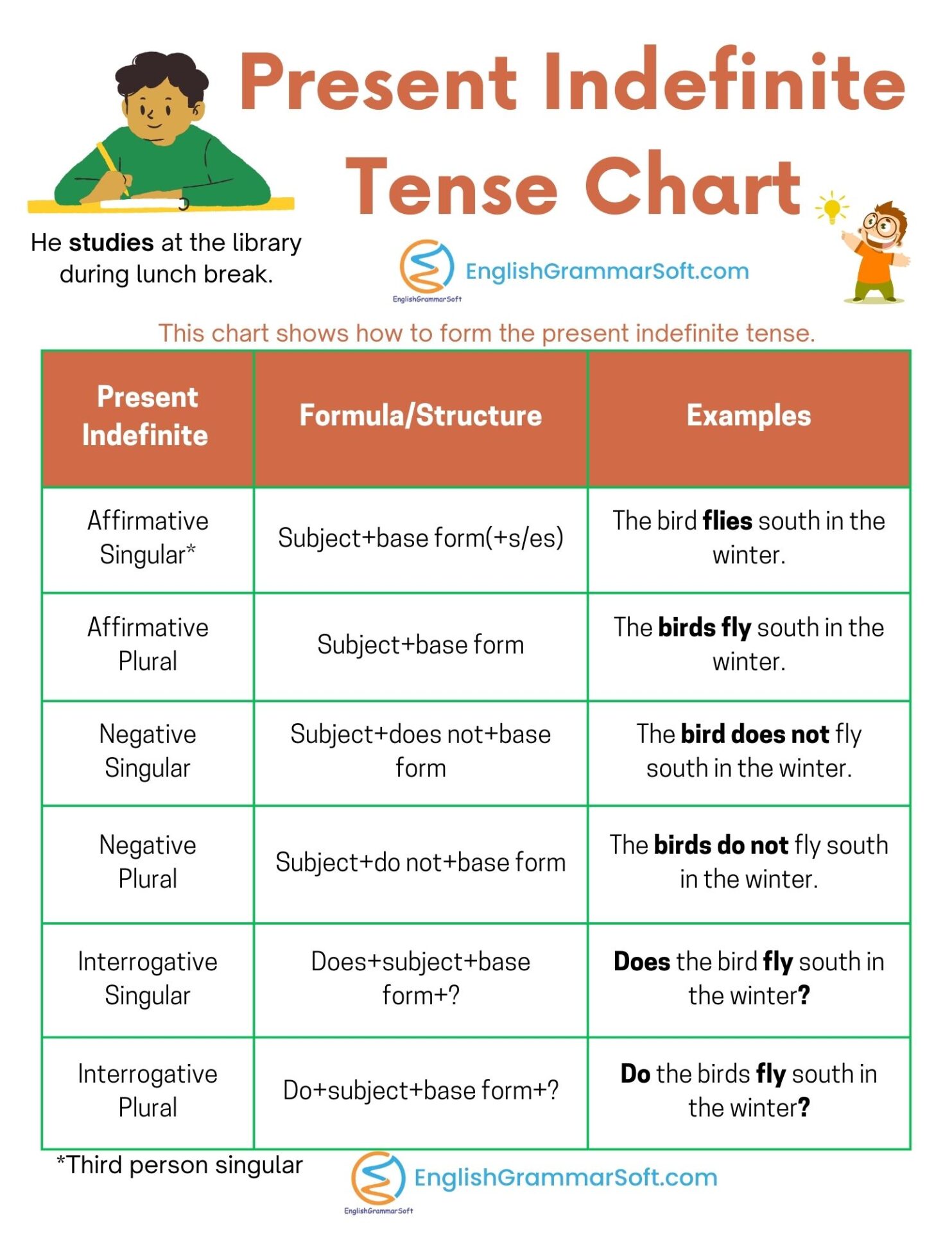
Present Indefinite Tense in English (Rules, Formula, 100 Examples
1. Repeated actions This is most common way to use the Present Indefinite tense. Whenever we talk about things that we do repeatedly, we use the Present Indefinite tense. Some of the things I repeatedly do: I wake up daily. I speak. I take a bath. I smile. I laugh. I go outside.

Present indefinite tense simple present tense YouTube
Present indefinite tense expresses all universal truths. Present simple tense always reveals all kinds of eternal truths and facts. Examples-. The sun rises in the east. Water has no color. Man is mortal. The sky is blue. The moon has no own light. There is no destruction of energy.

40+ Sentences For Present Indefinite Tense Practice Present
An example of a sentence in the present indefinite is "I feel happy today". Table of Contents What Is the Present Indefinite Tenses and Their Purpose Uses of the Present Indefinite Tense Other tenses Present Continuous Present Perfect Present Perfect Continuous The Present Indefinite Tense Structure How to Form the Present Indefinite Tense
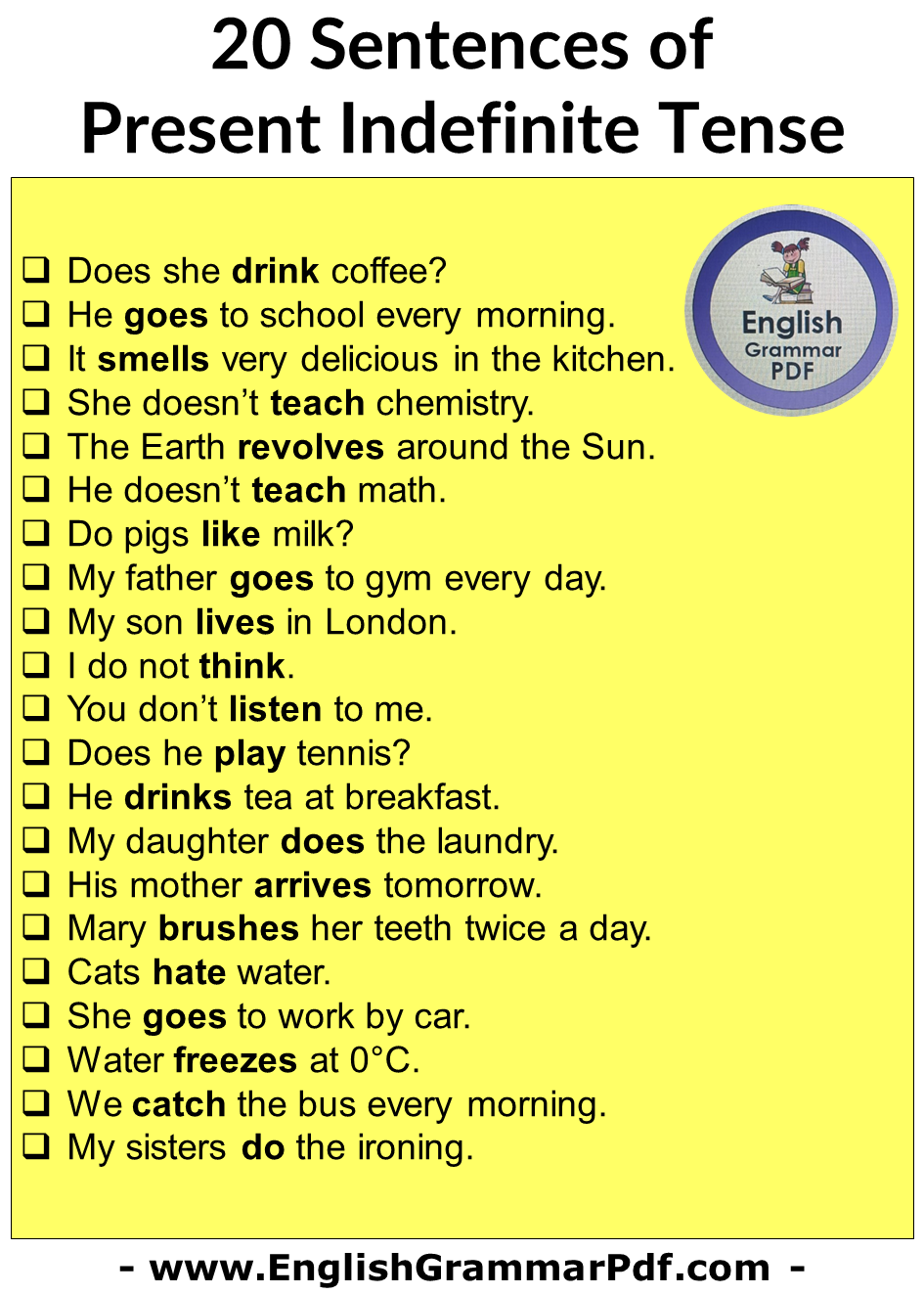
20 Sentences of Present Indefinite Tense PDF English Grammar Pdf
Rule 1. In the Present Indefinite Tense, we use the 1st form of verb + s/es with He, She, It and Name. e.g. These examples will help you understand this. He watches videos on Youtube. (mein Youtube par videos dekhta hu) She uploads selfies on Instagram. (Vo Instagram par selfies daalti hai) It rains every day. (Har roz barish hoti hai.)

Uses of Present Indefinite Tense English lessons for kids, English
Present indefinite tense is a grammatical tense used to describe actions or situations that are happening regularly, habitually, or are general truths. In this tense, the action is not tied to a specific time and is expressed in its base form or with the addition of an "-s" or "-es" ending for third-person singular subjects (he, she, it).
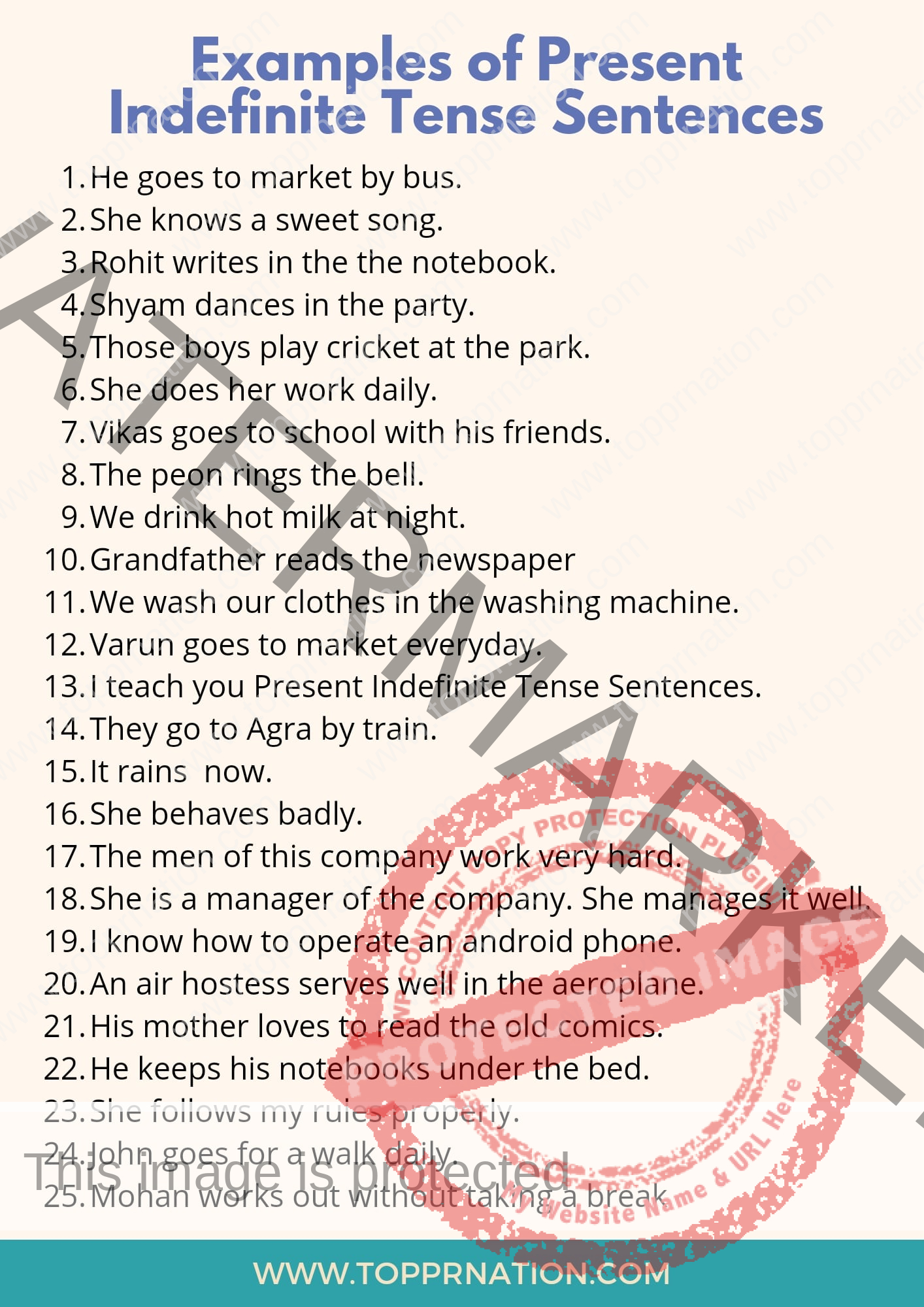
Examples of Present Indefinite Tense Sentences (Simple Present Tense)
The present indefinite tense, also known as the present simple tense, is used to describe actions or states that are general, habitual, or regularly occurring in the present. English speakers use it to talk about facts, routines, permanent situations, or things that happen often. We use the base form of the verb (infinitive) for most subjects.
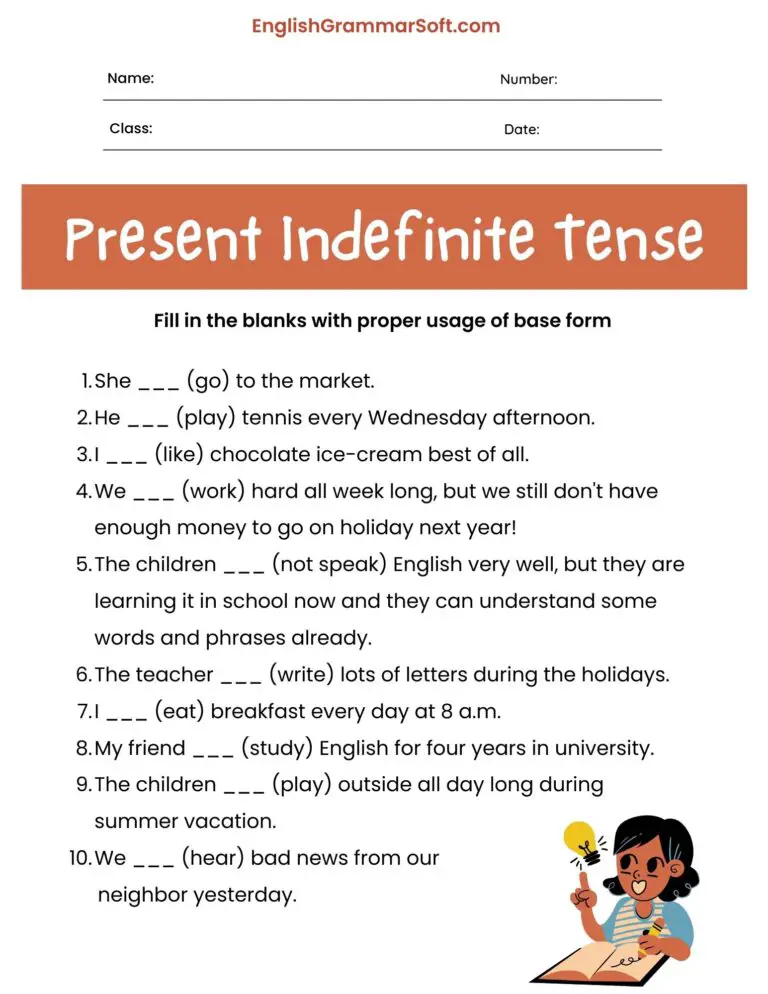
Present Indefinite Tense in English (Rules, Formula, 100 Examples
Definition of Present Indefinite Tense: Present Indefinite Tense represents an action which is regular or normal or true and uses the base form of the verb. In case of the third person singular number, 's or es' is added with the verb. Examples of Present Indefinite Tense: I write articles on different topics. He reads various kinds of books.

100 Present Indefinite Tense Sentences In English EnglishTeachoo
The Present Indefinite Tense, also known as the Simple Present Tense, is a fundamental tense in English grammar. It is used to describe actions, habits, general truths, and recurring events that happen in the present or are considered timeless. This tense allows us to express actions that occur regularly or repeatedly.

Examples of Present Indefinite Tense EnglishTeachoo
The present indefinite tense is a verb tense that describes an action or state that is happening at the moment. The present indefinite tense can also be used to describe actions or states that are always true. For example, when someone says "I am hungry," they are describing their current feelings.

The Present indefinite tense definition, structure and examples
Affirmative Sentences. The Present Indefinite Affirmative Tense, also known as the Simple Present Tense, is a grammatical tense used to describe actions, events, or situations that are generally true, habitual, or regularly occurring in the present time.It is used to convey facts, routines, and timeless statements. In this tense, the action is not necessarily happening right at the moment of.
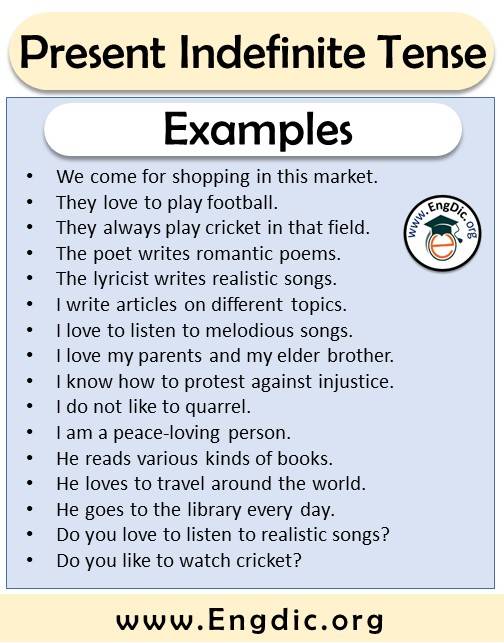
Present Indefinite Tense EngDic
Verb: The action word in its base form Object (optional): The person or thing that receives the action Understanding the basic structure of the Present Indefinite Tense is essential for both native speakers and learners of English, as it forms the foundation for a large portion of everyday communication.

Present Indefinite Tense Rules With Examples VK Study
Here you have to keep in mind -. In Present Indefinite Tense always you have to use the present form of the main verb. However, if the Subject is the Third Person Singular Number, then s, es or ies have to be added at the end of the main verb. Sentence Structure: S + V + O. They like sweets. They - Subject.